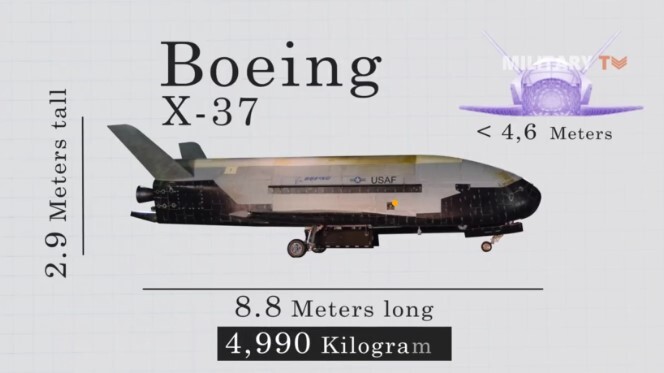The United States Air Force's X-37B is one of the world’s most advanced re-entry space vehicles, designed to operate in low-earth orbit, 150 to 500 miles above the Earth. According to USAF fact sheet: "The primary objectives of the X-37B are twofold: reusable spacecraft technologies for America's future in space and operating experiments which can be returned to, and examined, on Earth."
The space vehicle resembles NASA's famous space shuttle but is much smaller. The X-37B is about 29 feet long and 9.5 feet tall, with a wingspan just less than 15 feet. At launch, it weighs 11,000 lbs.
The X-37B's payload bay (the area in which the cargo is packed) measures 7 feet long by 4 feet wide -- about the size of a pickup truck bed. The content of the payload is classified; as Air Force officials generally comment only on the overall goals of the program.
Like the space shuttle, the solar-powered X-37B space plane launches vertically, with the aid of a rocket, and cruises back to Earth for a runway landing.
The X-37 program started in 1999 with NASA, which initially planned to build two vehicles: an Approach and Landing Test Vehicle (ALTV) and an Orbital Vehicle. The space agency transferred the project in 2004, to the military's Defense Advanced Research Projects Agency (DARPA), and X-37 became a classified project.
DARPA finished the ALTV part of the program in 2006, conducting a series of captive-carry and free-flight tests. NASA's envisioned Orbital Vehicle was never built, but it served as the inspiration for the spacecraft that came to be called the X-37B.
NASA left the X-37B program, and it is now run by the Air Force's Rapid Capabilities Office, with mission control for orbital flights based at the 3rd Space Experimentation Squadron at Schriever Air Force Base in Colorado. The space planes are built by Boeing's Phantom Works division.
The US Air Force has been flying the X-37B for the last 10 years, carrying out classified missions in low Earth orbit.
The unmanned spaceplane returned to Earth Nov. 12, 2022, after spending an impressive 908 days in orbit. The Orbital Test Vehicle successfully deorbited and landed at NASA’s Kennedy Space Center Shuttle Landing Facility.
WATCH the X-37B space plane in action















